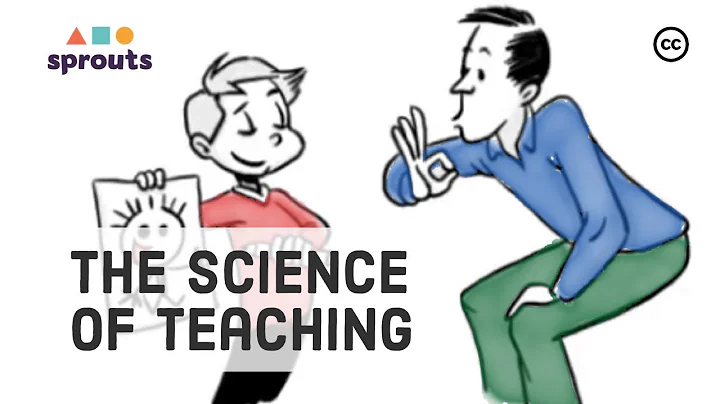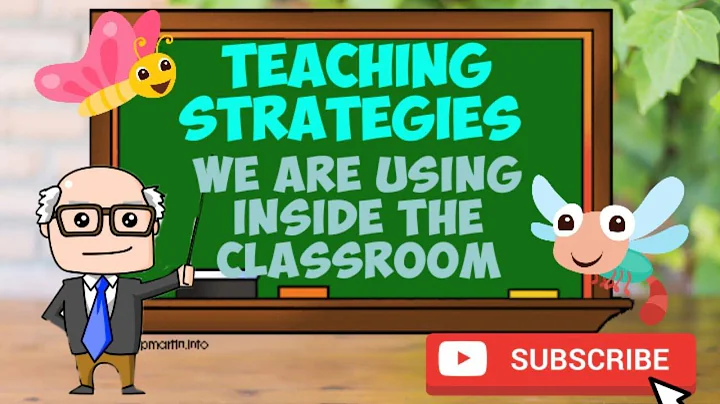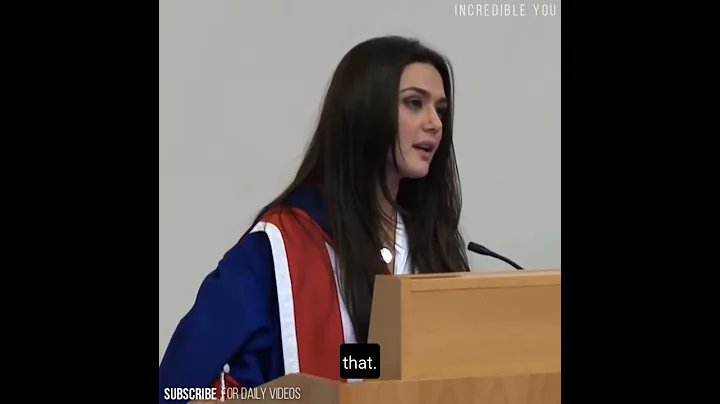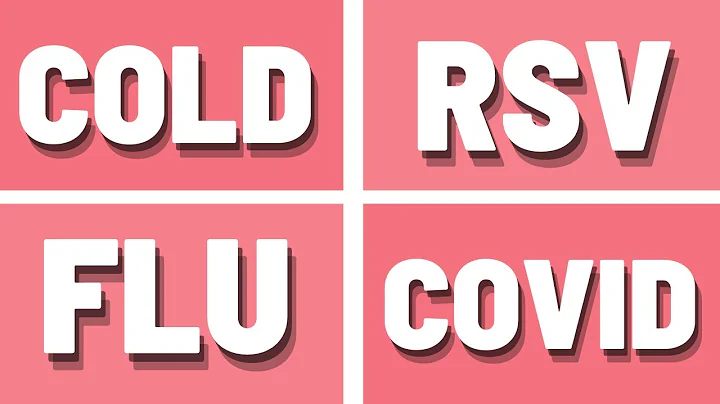
(Editor's comment: This is the 19th installment of "Taiwan Series Group Auxiliary Materials". Dear beautiful and handsome fans, , after reading this, please share and forward with in the upper right corner!!! There will be dozens of groups to follow! Supplementary materials will be released one after another (*^▽^*). )
1. Preface
Generally, when conducting tutoring activities, in order to combine the course content with students’ life experience, and achieve the purpose of students’ exchange of opinions and brainstorming. Purpose: Teachers mostly use group discussions to guide students in learning. Through discussions in different ways, students have the opportunity to communicate with each other and improve their problem-solving abilities.
Discussion methods commonly used in group activities generally include sixty-six discussion methods, brainstorming methods, symposiums, debate methods, etc. Among them, the "debate method" can cultivate students' critical thinking and judgment abilities, which is extremely challenging. Therefore, this article intends to discuss the implementation theory and application of "debating method" in group counseling activities.
2. The significance of debate
1. The significance of debate
When it comes to debate, it is easy to think of quarrels. When two parties (or multiple people) have opposing or incompatible impulses, motives, desires or goals, If you cannot satisfy them all, you must make a final choice among them, and conflicts arise.
When faced with a conflict, both parties (or multiple people) use words to state their positions in a disorderly manner and insist on their opinions, which is called "quarrel". However, debate uses organized and systematic words to distinguish right from wrong. I hope the conflict can be resolved rationally.
Especially when the problem involves a wider scope and a higher level, the problem must be made concrete so that relevant people can understand the pros and cons of various options. At this time, if debate activities can be used, differences can be fully expressed. opinions and challenge each other, allowing individuals to clarify their thoughts and then make decisions. For example: the formulation of social policies, the election of public opinion representatives, etc.
Therefore, although debates and quarrels are caused by conflicts and both use words to express each other's positions, debates are by no means quarrels. Debates refer to "a discussion on a specific topic under certain rules and procedures. People who hold positive and negative positions use verbal expressions to present their arguments and refutations to each other in a systematic and organized manner" (Zhu Chengming).
If you want to make a verbal statement in a systematic and organized manner, you must have clear logical thinking. Debate is mainly based on logic. The arguments and refutations of the pros and cons need to rely on the basic concepts of logical argument. , establish several arguments to support one's side or refute. The following are four common methods of establishing arguments
(1) Inductive argumentation method: based on known specific real facts, summarize principles and principles.
(2) Deductive argumentation method: use principles to deduce the characteristics of some events.
(3) Causal argumentation method: This can be divided into two types: predicting and inferring the results that will occur in the future based on the observed antecedents; and inferring the prior antecedents based on the observed results.
(4) Argument by analogy: Find the similarities between two things and infer another specific thing based on the similarities.
2. The importance of debate
In various activities in today's society, scenes of debate between two or more parties often appear, which can also show the importance of debate.
1. The battle between gentlemen in party politics
In recent years, whenever there is an election, several TV debates are inevitably held to allow candidates to express their political opinions. When voters watch the debate, they can firstly understand whether the candidates' political views are practical or meet the needs of society, and secondly, they can also see whether the candidates have clear ideas and quick reactions to respond to the opinions raised by other candidates. Question, after all, in addition to political opinions, the candidate's communication and adaptability is also very important.
2. Factual identification in modern justice
According to legal provisions, verbal debate is an indispensable part of the judicial process. An excellent prosecutor or lawyer must not only be familiar with professional knowledge and legal provisions, but also be able to clearly understand Present evidence and cite clauses, and argue with the defendant's lawyers to gain the approval of the judge and jury.
3. Development training for leaders
Leaders usually need to have the following abilities: fluent eloquence, the ability to think independently, careful organizational skills, and tactful response. These abilities are also required by a good debater. If you have the ability, general speech or communication training can certainly improve your personal communication skills, but only debate can better train your quick adaptability in thinking.
In summary, it can be found that debates can be found in everything from the cultivation of personal abilities to the formulation of group policies. The format of debates also varies depending on the number of people and the topic of the debate. The following is the more commonly used ones. The debate method "Oregon Debate Method" is explained.
Reference, Oregon-style debate
Since the beginning of debate competitions, there have been many different forms, and the situations used by countries around the world are also different. Currently, the most commonly used method in our country is the "Oregon-style debate" method. (Zhu Chengming).
Therefore, this article also explains more about the Oregonian debate method. When the author uses it in tutoring activity courses, he also teaches with reference to the Oregonian debate method.
The Oregon-style debate first originated in 1926. Professor J. Stanley Gray of the University of Oregon in the United States proposed an interactive questioning debate method (You Zixiang and Wen Weiqun). By 1952 At that time, it was officially adopted by the National Debate Association of the United States. The National Taiwan University Society of International Affairs translated its debating method into Chinese and introduced it into the country. It is still the most commonly used competition method in my country's debating circles.
The following is a brief introduction to the rules of Oregon-style debate:
1. Competition procedure
Most of the methods currently used in China are three-person systems. The procedure is as follows (Zhu Chengming, Min. 79):
1. The first defense of the affirmative side
2. The second opposition side The first defense of the affirmative side
3. The first defense of the negative side
4. The third defense of the affirmative side queried the first defense of the negative side
5. The second defense of the affirmative side
6.
9. The affirmative side's three defense arguments
10. The negative side's first defense question the affirmative side's third defense argument
11. The negative side's third defense defense argument
12. The affirmative side's second defense question the negative side's third defense argument
(A break of three minutes, and the order of closing arguments is determined by drawing lots, and the negative side can also be stipulated to conclude its defense first)
13. Pro (con) conclusion of argument
14. Pro (con) conclusion of argument
2. Time arrangement
Generally, the "three, three, three" system is adopted in school competitions, that is, the arguments, questions and conclusions are all three minutes. There are no hard and fast rules on the time schedule and the number of debaters for the Oregon-style debate competition, and relevant units can flexibly adjust the use.
3. Competition rules
(1) General rules
1. Once a prop is used, the other party has the same right to exercise it
2. Quoting the opponent's words must be correct, otherwise it will be deemed as a violation.
3. After the competition officially begins, team members are not allowed to receive any help from others.
4. During arguments, questions and conclusions, the bell will ring once at two minutes and thirty seconds, twice at three minutes, and three times at three minutes and thirty seconds.
5. In arguments, inquiries and conclusions, time points are deducted without limit.
(2) Argument
1. Applicants are not allowed to raise questions to other parties during the argument.
2. The argument time is three minutes. If it is less than two minutes and thirty seconds or exceeds three minutes and thirty seconds, one point will be deducted for every fifteen seconds. If it is less than ten seconds, one point will be deducted. Five seconds is calculated as fifteen seconds
(3) Questioning
1. The questioner may stop the person being questioned at any time from answering
2. The questioner may not quote words that are not acknowledged by the person being questioned as a question
3. The questioner shall stop the question after three minutes. If a question is raised again, one point will be deducted for every fifteen seconds, but it must be raised within three minutes. This does not apply to those who cannot complete the question on time.
(4) Answer
1. The person being questioned is not allowed to raise a counter-question
2. The person being questioned When responding to a question, you are not allowed to discuss or answer or refuse to answer.
3. The person being questioned may ask the questioner to repeat his question
(5) Conclusion
1. The conclusion must not raise questions about other parties or quote arguments that have not been put forward by both parties.
2. The conclusion should summarize one's own arguments or refute the other party's arguments.
(6) Rating
1. Evaluate individual performance and team performance separately.
2. The winning team will be determined by the team that obtains higher scores from the majority of judges.
4. The relevant theoretical basis and functions of debate application in teaching situations
1. Theoretical basis
In the teaching process, teachers can use a variety of different teaching strategies to achieve teaching goals, and different teaching strategies are also driven by different learning The theory is extended. As far as debate activities are concerned, the relevant theories are as follows:
Bruner's "discovery learning theory" believes that if students can discover the principles and principles from the changes in things and actively explore, this constitutes learning. The main conditions are as follows (Zhang Chunxing, Min. 84):
1. Emphasis on the structure of the learning situation, and the logical structure of the teaching materials must be in line with the students' mental development. After learning principles and principles from structural knowledge, students can develop their ability to organize and judge when seeking knowledge on their own, so that they can engage in independent research and pursue higher-level knowledge in the future.
2. Emphasis on students' self-exploration, discovering their own mistakes and finding the correct answers are important factors for effective learning. Students discover their own mistakes and correct them, which is more effective than external rewards.
3. Learning content must be related to real life in order to learn real knowledge.
In the humanistic learning theory, it is also emphasized
1. Every student has his or her own natural learning potential. If students adapt to their natural talents and are given opportunities, they will learn automatically.
2. Effective learning must rely on students to be spontaneous and explore the results. If the teaching materials can meet their needs or match the students' life experience, learning motivation will be generated.
3. Emphasize that learning activities are the responsibility of students, and teachers are mainly responsible for setting up classroom situations and providing materials.
4. advocates cooperative learning, which not only cultivates students' ability to actively seek knowledge, but also develops their interpersonal communication skills and develops team spirit.
combines the above two theories to form a teaching strategy oriented towards student self-study, which emphasizes that students learn under the guidance of teachers, pursue new knowledge in the process of cooperative learning, and integrate learning content with real life. The use of debate in group tutoring activities means that teachers provide a structured teaching situation and provide learning materials that are consistent with life experience, allowing students to actively explore and learn through group cooperation, and in the process of each other's arguments and debates , allowing students to clarify their thoughts and strengthen their behaviors to achieve teaching goals.
2. The purpose and function of debate in teaching
In summary, the functions that can be achieved by using debate in teaching are as follows:
1. Cultivate an attitude of caring about current affairs: Topics that can become debates are usually quite popular or controversial. Topics can prompt students to care about the social environment and current affairs so as to fulfill their civic responsibilities.
2. Cultivate thinking and judgment skills: Since the topic of the debate is controversial, there will be many related articles or reports talking about it. It is even more convincing to use the research results of experts as a discussion, so students must learn to How to collect and examine information, think and judge various plans, their results, costs, and possibilities, and form their own opinions (He Huiling).
In addition, when the pros and cons debate, the students who serve as judges are responsible for observing and recording the arguments of both sides, judging whether the arguments are logical, whether they are overly exaggerated or untrue, whether the evidence is reliable and substantial, etc., in order to serve as a basis for One of the basis for post-grading is that this kind of training can allow students to improve their independent thinking and judgment abilities instead of just listening to nonsense or blindly following authoritative theories.
Therefore, this method can train students to think carefully and make correct judgments better than speech or conversation.
3. Oral expression ability: In addition to sorting out their thoughts, students must also state their opinions and opinions in an orderly manner and express their thoughts calmly and rationally instead of making trouble or arguing loudly (Zheng Huifen). In this process, students can develop clear and polite oral expression skills.
4. Cultivate organizational and analytical skills: Research shows that after students receive debate training, their analytical and organizational skills have improved significantly (Pollock, 1982).
Because during the debate, any argument or words of the other party may become the target of our next defense attack or questioning. How to refute the other party's statement in an orderly manner immediately after the other party has finished speaking requires a high degree of organization and Analytical ability (Xu Huiling).
5. Cultivate an attitude of listening and accepting criticism: During the debate, in addition to putting forward their own opinions, debaters must also listen carefully to the other party's arguments to find out what can be refuted. On the other hand, they must also humbly accept the other party's questions. Or verbal attacks, cultivate the attitude of listening and accepting criticism.
6. Cultivate students' on-the-spot reaction ability: During the debate, both sides come and go. They must find key points and make appropriate explanations or questions in a short period of time. Such rapid insight and response are not only in the debate, but also in the debate. In addition to being indispensable in life, it is even more important to adapt to changes in daily life.
In short, debate is a way to express personal thinking process through language. If teachers can use it in teaching situations and supplement it with the concepts formed by students' own verbal discussions, the effect is often better than It is better for teachers to teach directly orally.
Wu, the application of Oregon-style debate method in group tutoring
Since the debate competition emphasizes students' thinking and judgment ability, teachers must let students have some practice in thinking and expression before using it. In daily life, they can make more use of story-based solitaire. Train students to brainstorm and value clarification, train students to think independently, and design riddles for students to ask questions.
The host can only answer yes or no to train students to ask questions, organize induction and reasoning, raise open questions to encourage students to express their views on this issue, and improve students' oral expression skills through oral reports. These methods are naturally integrated into course teaching. , students will be more comfortable in conducting debates.
Secondly, debate competitions also attach great importance to the structure of the activity, so teachers must also inform students of the rules and related techniques of the debate competition. However, based on the consideration of the real environment, the orthodox Oregon debate consists of three people from each side. , but if it is conducted as a class tutoring activity course, the number of people can be as many as 40.
Therefore, after overall consideration and evaluation, the rules and methods of debate have been adjusted. The author has also used this method to actually teach courses. Even after the class debate competition, inter-class competitions continued. The author lists the following The debate competition process has been adjusted after consideration for reference.
1. Preparation course:
Since the author's class is conducted in groups, with a total of six groups, in order to allow each student to participate in activities and concentrate during the competition, a grouping system is adopted. Two groups are square, and two groups are divided into two groups. The one group is the opposing side, and the two groups are the judging panel.Teacher
first uses a class to introduce the rules of the debate competition and the division of labor responsibilities of the groups. It is best to list it in written information for students' reference. Here is a rule sheet designed by the author. Finally, list the questions prepared by the teacher, decide on pros and cons, and ask students to collect information after class. Students should sit down before class next week.
2. Debate topics:
topics should be as relevant as possible to students’ life experiences, and can also be matched with current affairs issues. The following are some topics that can be used as debates, for reference only. Teachers can make changes according to actual needs.
For example: "Is it suitable for junior high school students to have male and female friends?" "Can students wear casual clothes to school?" "Should schools set up Internet cafes?" "Is Internet cafes a good place for leisure?" etc.
Debate competition rules description
1. Personnel allocation:
Positive side : 1. Select five debaters to be responsible for arguments, cross-examination, and closing arguments.
2. Others are think tanks and are responsible for providing information to the defenders.
Opposition : 1. Select five debaters to be responsible for arguments, cross-examination, and closing arguments.
2. Others are think tanks and are responsible for providing information to the defenders.
Jury : Each person is responsible for scoring and commenting. (The score sheet is shown in Appendix 1)
(1) Scoring criteria include: argument content and argument skills, questioning content and questioning skills, defense content and defense skills, and think tank style performance
(2) Scoring awards: Group Winner Award, Best Think tank and two best debaters
(3) Commentary: Two representatives will be nominated by the jury to be responsible for commentating.
Host: one.
1. Control the time and process of the debate competition to make the competition smooth.
2. Introduce the competition topic, The jury, the debaters for the pros and cons, and announced that the competition will start 3 minutes after the discussion between the two sides.
3. Maintain the order of the venue, and make corrections for violations or disruptive words and deeds.
Timing: two.
1. Please write on both sides of the blackboard before class. The claims of the pros and cons
2. Time the pros and cons respectively.
(1) Please ring once 15 seconds before the time is up.
(2) Please ring the bell twice when the time is up.
(3) Please ring the bell if the time exceeds 30 seconds. Three bells
2. Competition procedure:
1. The host introduces the competition topic, the jury, the debaters for the pros and cons and announces the start of the competition
2. The preparation time is 2 minutes
3. The pros and cons argue for 5 minutes (the debaters take turns to argue, one minute for each person) (The debaters’ words at the beginning of their speeches are always: teacher, chairman, judges and fellow debaters of the other party, hello everyone, I am ○○ from the ○ side, and we advocate...)
4. The opposing side makes an argument for 5 minutes (the debaters take turns to make their arguments, One minute for each person)
5, 8 minutes of cross-examination
6, 2 minutes of positive and negative arguments
7, 2 minutes of negative arguments
8, review discussion and score statistics 4'
9, review comments 5"
10, announcement of scores and winners 2'
11 , awarding 2"
12, teacher's comment 8"
3. The course is in progress:
Before the debate competition begins, students are reminded to perform their duties; after the competition begins, the teacher observes and records the activity process. After the competition is finished and scored, the teacher except In addition to summarizing the discussion content, students should also be encouraged to give feedback on their performance and award team and individual certificates to encourage students.
4. After the course is completed and the first competition of
is completed, The job roles can be exchanged again, for example: the group that serves as the judge this time will be the affirmative group next time, and the group that serves as the affirmative this time will serve as the negative side next time. This rotation also allows students to have more opportunities to practice
if it is a class. Students in debate competitions are active and interested. Teachers can encourage students to participate in debate competitions with other classes to expand each other's horizons and promote inter-class interaction.
Lu, Conclusion
uses the method of debate to carry out activities, which is a new attempt for students and a challenge for teachers.
tutoring activities have always emphasized students as the main body, allowing students to explore and learn in the activities. Therefore, if teachers can flexibly use various activity methods, plan properly in advance, carefully observe students' performance and reactions in class, and then make timely adjustments, perhaps It is difficult to control it properly the first time, but just like students learning, practice makes perfect, and students will naturally feel the enthusiasm and intention of the teacher.
Seven, References
He Huiling. Why take a debate class? English Teaching , 18(2), 16-28.
Xu Huiling. A brief discussion on the training of Oregon-style debate, Hualien Cultural and Educational Quarterly , 9, 46-49.
Zhang Chunxing. Educational Psychology. Taipei: Tung Hwa.
You Zixiang and Wen Weiqun. Oregonian Debate. Taipei: Yeqiang.
Zhu Chengming. Debate vertically and horizontally. Taipei: Laurel.
Zheng Huifen. A battle of words—Guidance and implementation of the Oregon Debate Competition, Gifted Education Quarterly , 53, 33-35.
Semlak W.D. Shields D.(1997). The effect of debate training on students participation in bicentennial youth debates, Journal of the American Forensic Association,13(4),194-196.
(Editor’s remarks: Dear beautiful and handsome fans Dear , after reading it, please share and forward in the upper right corner! ! There will be dozens of sets of group supplementary materials that will be released in the future (*^▽^*). It’s not easy to keep sorting out.)
For more historical information, you can click to directly view
Community benefits of the conference: The workshop will be held at freezing point after the conference
Workshop 1:
Pioneer schools in many fields such as positive psychology and positive discipline
"Adlerian Positive Psychotherapy" Workshop" - Zeng Wenzhi
Workshop 2:
conforms to the Internet consultation boom that emerged under the Internet trend
"Online Psychological Counseling Ethics and Technical Practical Workshop" - Wang Zhihong
Workshop 3:
Bypassing psychological defenses, The ultimate skill of psychological counseling
"Painting Projection Analyst Training Course (Elementary)" - Liu Wei





















